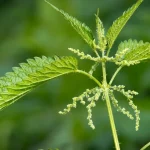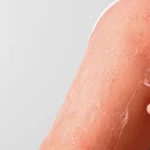Red rashes on the skin: Causes, symptoms and effective treatment

Do you have red rashes on your skin and don’t know what’s causing them? Red rashes are a common problem that affects people of all ages. They can appear anywhere on the body and cause discomfort, itching, burning or even pain. In this guide, we will explore the most common causes of red rashes , how to identify them and what you can do to treat and prevent them.
The most common causes of red rashes
1. Dermatitis (skin inflammation)
- Atopic dermatitis : A chronic skin condition that causes dry, itchy, and irritated skin. Common in children, but can also affect adults.
- Contact dermatitis : A rash caused by skin contact with irritants or allergens (e.g., cleaning products, perfumes, metals). It is characterized by a red rash, itching, and sometimes blisters.
2. Allergic reactions
Exposure to allergens, such as certain foods, medications, cosmetics, or plants, can cause allergic rashes . A common manifestation is hives – itchy, raised, red patches on the skin.
3. Skin infections
- Bacterial, viral, fungal, or parasitic infections can cause different types of rashes.
- Fungal infections (e.g., candidiasis) often occur in the folds and manifest as a red, itchy rash.
4. Heat rash
It occurs due to clogged sweat glands, especially in hot and humid weather. It is characterized by small red pimples that itch or burn.
5. Psychological factors (stress)
Stress and anxiety can trigger physical reactions, including red rashes or hives, especially on the hands, face, or torso.
How to treat red rashes?
Identifying the cause of a rash is key to effectively treating it . Here are some proven approaches:
• Moisturizing and skin care
Regularly use moisturizers that contain ceramides and fatty acids. This helps restore the skin barrier and reduce itching.
• Avoiding irritants
Use gentle soaps without fragrances and sulfates , wear clothes made from natural materials (cotton, silk) and avoid potential allergens.
• Cold compresses
Cold, wet compresses on the affected areas help reduce inflammation and itching .
• Proper hygiene
Keep your skin clean and avoid prolonged contact with moisture to prevent secondary infections .
• Stress management
Regular exercise, meditation, yoga, and relaxation techniques can help reduce psychological triggers of rashes.
Conclusion
Red rashes on the skin can be caused by a variety of factors – from allergies and infections to stress or weather conditions. By understanding the causes, taking timely action and providing proper care, most rashes can be successfully managed and prevented from recurring.
- Nettle – a natural gift of forest wisdom
 Stinging nettle (Urtica dioica) is an ancient medicinal plant rich in nutrients and antioxidants. It is clinically supported for its allergy relief, anti-inflammatory and nutritional value. Nettle tea or dishes provide gentle yet effective support for the body.
Stinging nettle (Urtica dioica) is an ancient medicinal plant rich in nutrients and antioxidants. It is clinically supported for its allergy relief, anti-inflammatory and nutritional value. Nettle tea or dishes provide gentle yet effective support for the body. - Burns: how to recognize them, take action and restore the skin with Ribogal fish ointment
 Burns weaken the skin barrier, causing moisture loss and inflammation. Quick first aid includes cooling and the use of gentle ointments. Ribogal fish ointment, rich in petrolatum, lanolin and omega-3 fatty acids, supports skin regeneration, guides its protection and hydration, and accelerates the healing process.
Burns weaken the skin barrier, causing moisture loss and inflammation. Quick first aid includes cooling and the use of gentle ointments. Ribogal fish ointment, rich in petrolatum, lanolin and omega-3 fatty acids, supports skin regeneration, guides its protection and hydration, and accelerates the healing process. - Yogurt bowl with flaxseed for energy, digestion and heart
 Yogurt bowl with flaxseed, berries and nuts – a nutritious and refreshing meal, rich in fiber and omega-3 to support the heart and digestion.
Yogurt bowl with flaxseed, berries and nuts – a nutritious and refreshing meal, rich in fiber and omega-3 to support the heart and digestion.
















